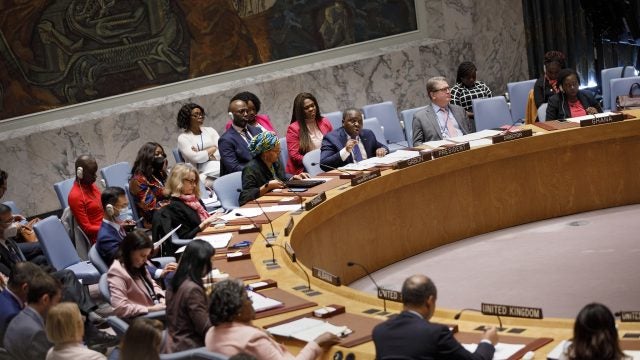
Title: Afghan-Sino Relations: A Different Mindset. A Different Outcome?
Both economic and security measures are crucial to reducing Islamic extremism in Afghanistan. While Chinese economic measures offer hope for financial growth and regional stability, terrorist acts continue to endanger China. China’s strategy toward Afghanistan varies from the US approach. The Chinese approach could lead to the economic uplifting of the masses in Afghanistan and subsequent reductions in terrorism and extremism through cooperation with the Taliban.
Introduction
For two decades, the Taliban and other rebel organizations have been the target of US and North Atlantic Treaty Organization (NATO) military operations in Afghanistan. China has never participated in operations such as the International Security Assistance Force (ISAF). However, China has contributed significantly to Afghanistan’s economic growth, reconstruction, and reconciliation attempts. Almost every nation withdrew their embassies and personnel during the US exit from Afghanistan and Taliban takeover in August 2021, but China was the sole exception.
Beijing has taken a different approach than the United States to managing Afghanistan. Beijing seeks to maintain the stability-security paradigm of Xinjiang by neutralizing the Uyghur militants on Afghan soil before they plan operations against the Beijing government and aggravate the already fragile Xinjiang. Beijing is also intrigued by the vast unexplored mineral wealth in Afghanistan. Indeed, China is particularly intrigued by the rare earth minerals that are necessary in burgeoning industries such as semiconductors. Afghanistan also represents an appealing market for Chinese goods. China’s approach to Afghanistan promises to yield better results than that of the United States, as China promotes the political stability and economic progress in Afghanistan that all sides support.
Contrasting Mindsets
Since September 11, 2001, the United States has maintained a significant presence in Afghanistan. Following NATO’s overthrow of the Taliban regime, NATO troops have engaged in a prolonged counterinsurgency operation against Al-Qaeda and the Taliban. With over 100,000 American troops deployed at the height of the conflict, the United States made significant political and military investments in Afghanistan, providing billions of dollars in aid to the Afghan government to train Afghan forces and equip them with arms and ammunition. The United States has also provided aid to international humanitarian organizations working on the ground in Afghanistan. The United States focused primarily on fighting terrorism with bullets and boots on the ground while reconstructing Afghanistan based on democratic ideals–reestablishing civil and political rights for the locals. The United States had effectively remodeled Afghanistan based on American values and principles.
Washington’s strategy sought to prevent Afghanistan from becoming a terrorist launchpad. A stable, self-sustaining democratic government has been the American vision for Afghanistan. To realize this vision, America promoted democratic institutions like free and fair elections and a free press. The continuous turmoil and unrest that followed Afghanistan’s capture by the Taliban in 2021, however, obstructs the values that America had attempted to impose, rendering the two-decade-long effort largely ineffective. The mission to integrate all the components of Afghan society into one powerful, self-sufficient, and prosperous nation was not successful. The ineffectiveness of Afghanistan’s democratic government was evidenced by its inability to withstand the force of the Taliban for even a single day following US withdrawal.
In contrast, China kept itself militarily aloof, contributing to Afghanistan’s attempts to rebuild and strengthen its economy. Beijing prioritized commerce and its national security, refusing to meddle with the Afghan interim government. Afghanistan has received substantial financial aid from China, including investments in infrastructure initiatives such as roads, trains, and power plants. The China-Afghanistan-Pakistan Economic Corridor of 2016, which aims to increase commerce and investment in Afghanistan, is one such example. China follows a unique strategy of boosting the Afghan economy, which could eventually influence Afghan politics in the long run. Per the Chinese calculation, the population of Afghanistan will be lured away from extremism and terrorism when economic prosperity reaches the poorest socio-economic segment of the population. According to Einar Tangen, a China Global Television Network political and economic affairs commentator, once Afghans experience a secure, prosperous, and peaceful existence, they will never return to the paths of terrorism.
China’s Afghanistan Engagement Strategy
China’s diplomatic engagement helps gain the trust of the newly formed Afghan interim government, assuring them that Beijing’s policy does not seek to destabilize but rather assist in consolidating and strengthening Afghan national security. By doing so, China promotes its national interest by safeguarding Xinjiang’s vulnerable society from terrorism and extremism, limiting its spread to the Af-Pak region, and neutralizing it with Taliban and Pakistan’s support. Independent of NATO, China seeks to shape regional counterterrorism efforts with regional actors’ support and protect its Belt and Road Initiatives (BRI) in the region. China is concerned about the possibility of violence and unrest in Afghanistan spreading to the Xinjiang province. China’s covert and diplomatic outreach to the Taliban both before and after Kabul’s fall demonstrates China’s astute foreign policy judgment. Beijing perceives the Taliban as competent, recognizing its importance in controlling regional terrorist organizations and neutralizing anti-Taliban and anti-China terror groups such as the Islamic State of Khorasan. The growth of the Islamic State of Khorasan Province (ISKP) in the Af-Pak region presents Uyghur militants with a new base of operations, enabling the province and militants to assist each other in accomplishing their agendas. This symbiotic relationship threatens China, its workforce abroad, and the internal stability of Xinjiang.
As a part of its BRI, which aims to increase China’s economic and geopolitical power over the region, China is forging business relations with the Taliban. A stable Afghanistan will offer China a reliable land connection to Iran and the rest of the Middle East. Hence, Afghanistan is Beijing’s first move in securing the Middle Eastern market and streamlining its energy transit. The cash-strapped Taliban government, under sanctions, has agreed with China and Pakistan to expand the China-Pakistan Economic Corridor (CPEC) to Afghanistan, attracting billions for infrastructure investment. China’s economic involvement includes investments in mineral exploitation worth over $1 trillion. The Xinjiang Central Asia Petroleum and Gas Company (CAPEIC) recently signed a $540 million oil and gas deal. Chinese company Gochin also offered to invest $10 billion in Afghanistan’s lithium mining industry, which is valued at $1 trillion. In a recent Aljazeera documentary, Professor Wang Duanyong of Shanghai International Studies University, who leads research on China’s overseas investment, emphasized the importance of Chinese companies respecting Afghanistan’s local laws, customs, and culture. Professor Wang is also an investor in China Town Kabul, which recently signed a $200 million contract with the Afghan Ministry of Land. The company is currently scouting potential locations for a new metropolis designed to accommodate 3 million people and foster factories and commerce. China’s strategy is limited to government-to-government negotiations without meddling in Afghan politics. Chinese investment plans and development initiatives in various economic sectors across Afghanistan are poised to generate capital assets, create local employment opportunities, and empower the lower economic strata, contributing to the promotion of peace and prosperity. This aligns with Rashid Dostum’s perspective, the former Vice President of Afghanistan, who argues that the United States made two critical mistakes during its twenty-year occupation. The first error was attempting to enforce centralized, democratic governance on a nation with a unique political and cultural background. Dostum suggests that more attention should have been directed towards enhancing the livelihoods of rural Afghans, utilizing the country’s abundant mines, oil, and gas resources. He contends that preventing mass emigration by providing jobs and addressing basic needs would have paved the way for the organic development of democracy.
Different Outcomes
The US approach to negotiating peace in Afghanistan faced several hurdles due to its liberal agenda enforcement and high levels of corruption among the Afghan administrators themselves. In contrast, Beijing distanced itself from the political structures in place. In its peace agenda, it highlighted the value of regional economic growth to foster peace and stability. Following the Doha Agreement 2020, China recognized the Taliban’s power and quickly stepped up several secret talks, realizing that the Taliban would gain significant influence in the current power structure or perhaps entirely overthrow it. China’s diplomatic foresight helped to forge positive ties with the Taliban with both sides respecting each other’s needs.
The Taliban wanted investment, international legitimacy, and votes to join multilateral organizations from China. Chinese investments would revive the Taliban’s economy and provide crucial infrastructure support. The Taliban could then use Afghanistan’s abundant lithium and cobalt reserves as a negotiating chip to further its own international political and economic goals. On the other hand, Beijing wished for security assurances in its northwestern frontiers, the neutralization and deportation of any Uyghur militants planning terror attacks, and the elimination of any terrorist groups, such as the ISKP, becoming more sympathetic to the Uyghurs. Beyond security measures, Afghanistan’s mineral reserves hold strategic value for Beijing. China seeks to strengthen its position in the global minerals supply chain by exploiting Kabul’s abundant mineral resources, particularly cobalt, lithium, and rare earth metals. The acquisition of these resources would bolster China’s dominance in battery storage technology, providing them with a competitive advantage over the West. Consequently, China’s diplomatic engagements with the Taliban are primarily focused on safeguarding their security and economic interests without interfering in the day-to-day operations of the Afghan government. This approach ensures the protection of China’s interests both at home and abroad.
Conclusion
In their approaches to Afghanistan, the United States and China diverge significantly. The United States had a political-militaristic strategy and made significant political changes to Afghanistan’s governance structure and institutions. However, large US grants and aid only enriched Afghan politicians and their close associates; the ordinary Afghan populace did not benefit. It is also difficult to discern if the general populace was ready to accept this softening of rigid Islamic and tribal customs brought about by the gradual introduction of Western values.
China, meanwhile, has prioritized diplomacy and economic growth. The Chinese presence and influence have progressively increased due to the void left by America’s withdrawal of its military from Afghanistan last year. China’s strategy is top-down with a precise focus on economic benefit to both itself and Afghanistan–while also serving the security interests of Beijing. Chinese investments in heavy industries, factories, and commercial estates could lead to the development of local jobs and prosperity for the lowest rungs of the Afghan economic pyramid. Financially empowering society’s lower strata would bring peace and prosperity. As society advances, it will be empowered to demand a more effective government.
Ultimately, Afghanistan’s future depends on ties with its neighbors, including China, India, and Central Asian nations. China’s approach in this regard is not that of a rival superpower but rather one centered on promoting mutual growth and defense. Under this strategy, the Taliban would be strengthened and consolidated as a powerful government that could reduce terrorism in China while enhancing its citizens’ quality of life. This strategy could deliver Afghanistan the stability that all sides support.
…
Amit Kumar is a doctoral candidate at the Birla Institute of Technology and Science, in Pilani, India. In addition, he is an Adjunct Researcher at The MirYam Institute in New York. He also works for The Defence Horizon Journal in Austria as an Associate Editor.
Dr Veena Ramachandran is an Assistant Professor at the Department of Humanities and Social Sciences, Birla Institute of Technology and Science, Rajasthan, India. Her specialization is in China Studies.
Image Credit: flickr
Recommended Articles

This article explores the uncertain future of Arctic governance amid shifting global geopolitics. It argues that whether Washington and Moscow opt for confrontation or cooperation, multilateralism in the Arctic…

Twenty-five years ago, the United Nations Security Council adopted Resolution 1325, establishing a framework that underpins the Women, Peace, and Security (WPS) Agenda. The Resolution recognized both the…

When we analyze conflicts in the Middle East, we are not analyzing conflicts with isolated impacts but risks for global energy security. Recent conflicts in the Middle East have highlighted…